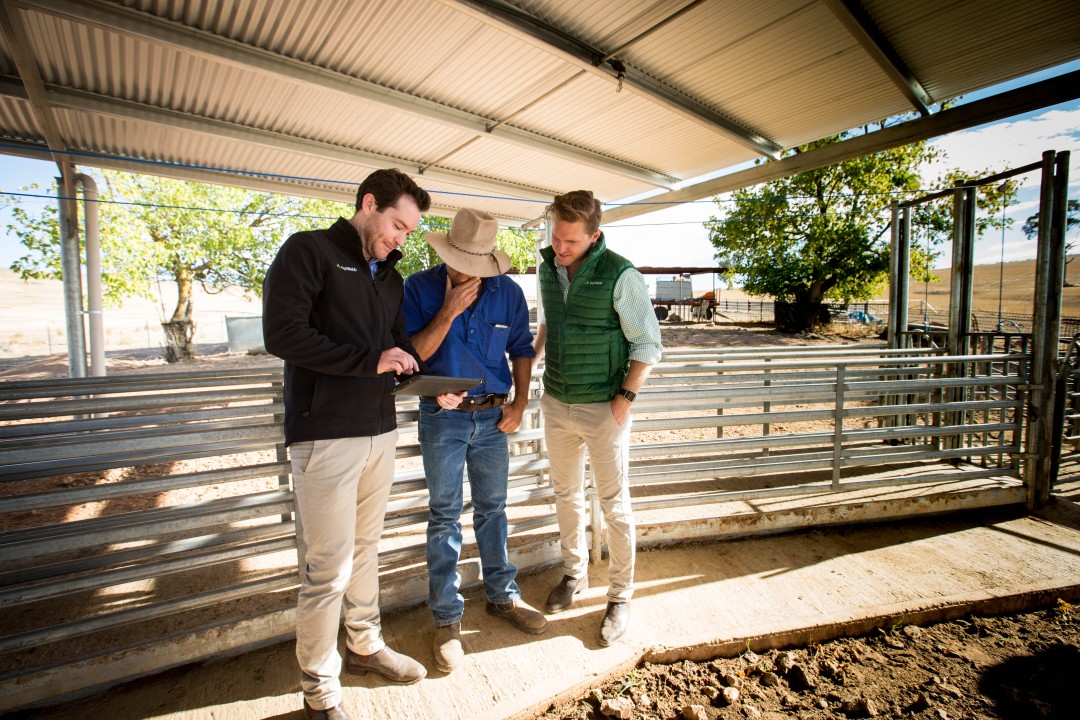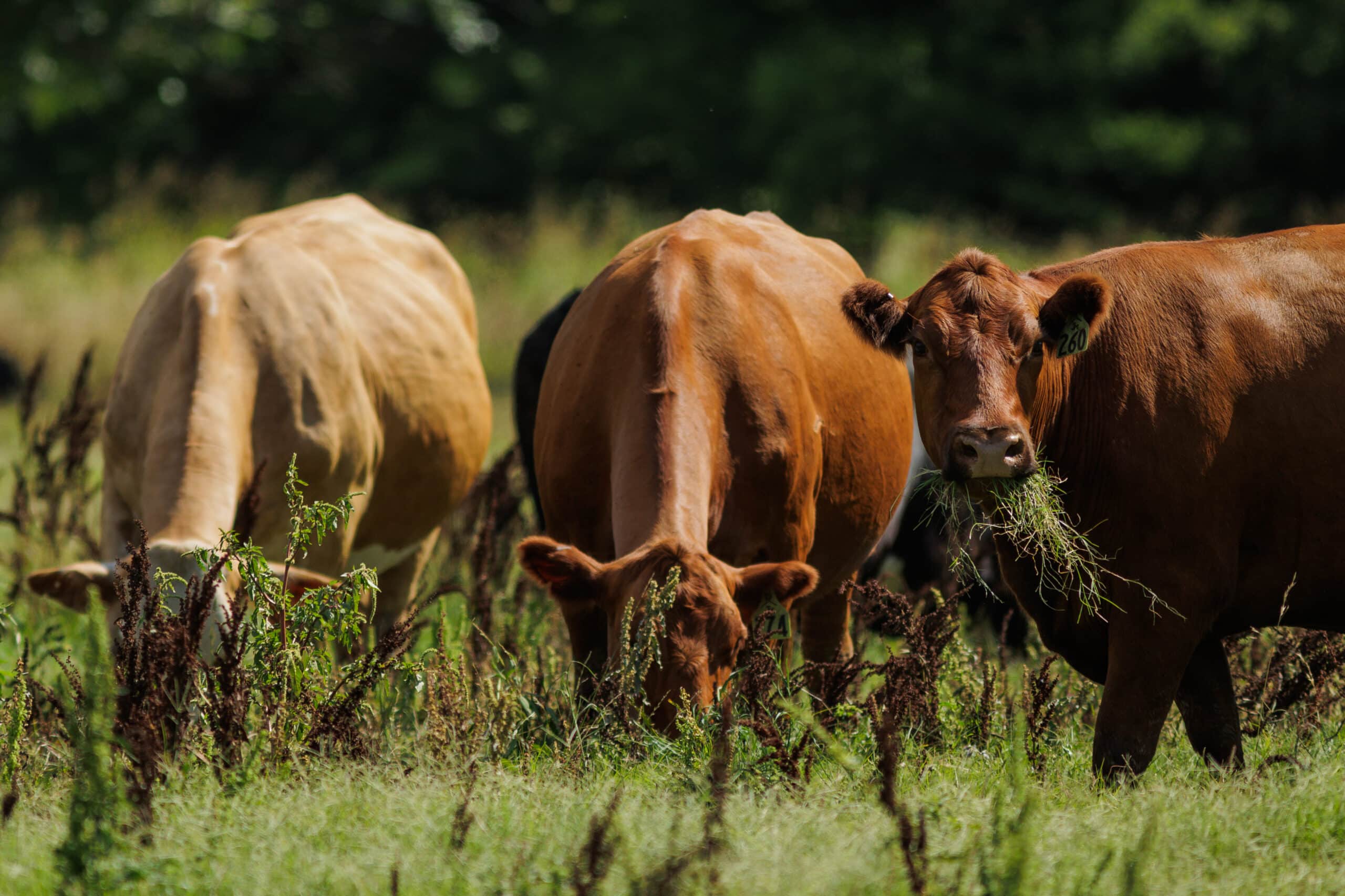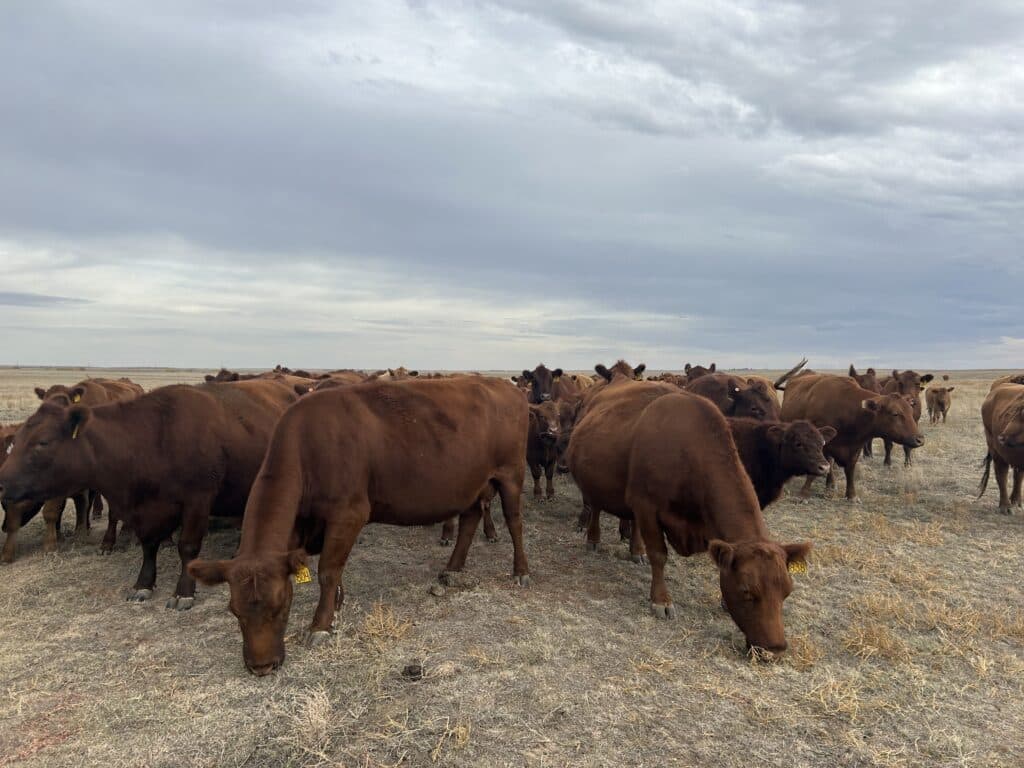Building impactful Scope 3 programs: value, impact & expectation

This article is part 1 of a series of articles focused on Scope 3 programs written by Campbell Mauchan, Vice President of Partnership at AgriWebb.
To no one’s surprise, Scope 3 programs are becoming THE hot topic across the agriculture industry. Two foundational components of these types of programs, on-farm data collection and change management, have been areas of focus for both myself and the AgriWebb team as we work with almost 18,000 farmers and ranchers globally.
Based on insights we’ve learned over the last 10 years on how to effectively engage producers in innovation, I’m sharing my thoughts on Scope 3 project considerations in a multi-part series that includes trends, new challenges, and familiar hurdles faced.
As the team here at AgriWebb, along with our partners, continues to develop beef Scope 3 programs, I’m noticing alignment in the factors influencing producers’ engagement with new programs and technology alike.
Alignment between project, partners, and producers goals will be a key theme throughout the series, and it’s one that time and again makes all the difference. I will never forget my first “field day” in NSW, Australia and the harsh lesson learned about this alignment of goals.
After delivering my AgriWebb demo and pitch (which, after multiple practice sessions, my wife assured me was spot on) to an unsuspecting producer who had walked up to our stand, I was met with a few words that quickly changed my outlook…
“Why would I want to know my farm’s cost of production?”
In hindsight, our product, any product or project for that matter, may have been the perfect fit for this producer. However, I had not taken the time to understand why there might have been a fit. What did this producer value? What were they struggling with? What did they want to improve?
My immediate thought was, ‘I know they’ll love this! I want to show them!’ I, I, I….
Whether it’s the adoption of a new practice, a new project or a farm management software tool we, as an industry, would do well to always try and better understand the goals of the producer we want to engage.
With that haunting experience out of the way, let’s get into it!
In Part 1 of this series, I want to tackle how Scope 3 programs can be set up and communicated to best maximize mutual value.
Being a SaaS company, the AgriWebb team knows all too well that unless producers understand and experience true value from a new piece of technology, their usage and interest is likely to waver. The same rules apply for newly developed Scope 3 programs.
In my experience, there are three key considerations that should be made when designing and communicating a new project: value, impact and expectation.
Value – Land and Livestock
It’s crucial to do your homework! Understanding what truly matters to a producer is paramount to the success of any form of producer engagement, especially Scope 3 programs.
Most, if not all, producers care for, and about, their land and livestock more than we ever could. Because of this, producers’ goals focus on improving the productivity and resiliency of their entire operation to ensure it’s left in better shape for the next generation. When developing and communicating Scope 3 programs, it’s important to place an emphasis on supporting these areas as best we can.
Insetting programs, whereby tonnes of CO2e stay within their own supply chain and contribute to a more sustainable end product, offer another point of value for producers. Effectively communicating the positive value of these kinds of programs is crucial to getting buy-in from producers.
However, simply because a project, and the practices involved, provide benefits to a producer doesn’t mean you’re off to the races… It’s important to convey and consider the overarching impact a project has across their operation.
Impact
What we need to remember in the design and communication of a Scope 3 project is that the producers we seek to engage are business owners. Programs being developed should align with producers’ business objectives, and not just improving the efficiency of one’s land and livestock and reducing CO2e, but to also focus on how a project positively impacts a business’ bottom line.
When it comes to Scope 3 and other programs we’ve helped to implement over these last eight years, a few key themes emerge:
Incentivization: The reality is, implementing and adopting new practices comes at a cost for producers. When building a project, it’s important to work with producers to find interventions where the financial incentive and impact on the operation far outweigh the costs. If a producer perceives that the financial incentives & benefits don’t exceed the cost of implementation and practice changes, a project will not succeed.
Tooling: Monetary incentives are far from the only benefit a project can deliver. Tools that both help fulfill project data requirements and benefit the producer’s overall operation can be incredibly impactful.
I’ve been fortunate enough in my time here at AgriWebb to interact with hundreds of producers, and I’ve met only a handful who want more “data.” Like anyone else, producers want tools that deliver insights and information, not more data that needs to be interpreted.
- Weights and EID’s < DLWG graphs that inform breeding & buying decisions
- Treatment Records < Total Cost of Production per Head Report
- Movement Records < Stocking Rate and Pasture Utilisation Map Overlays
Insights are powerful, but reduced record keeping….
I won’t name names, but a quote from an insetting project funder really hit home with me. They said, “We need to ensure we are providing producers with the tools that can both mitigate the ‘Pain in the A$$ factor,’ as well as benefit their operations.” It’s critical that we don’t shy away from highlighting the tools that producers get to use when participating in Scope 3 programs, like AgriWebb and many others, that help streamline project involvement and benefit the producer’s overarching business.
Support: Change is hard! Even with monetary incentives and the best available tools, we shouldn’t underestimate the value of a robust producer assistance network. Producers want to know that they’re being supported, and that they can rely on multiple experts to aid them in their involvement in a project. (More on selecting your project dream team in Part #2.)
Of course, support is needed for project admin and is a necessity for successful usage of the above mentioned tooling, but where your project can really shine is if you’re able to offer leading technical assistance. New practice implementation is just that, new! From my experience, producers value and appreciate having someone at their side who can help them successfully select and implement these new practices. Who doesn’t like free consulting?!
Expectation
Last, and certainly not least, we would do well to follow the old adage of “Under promise and over deliver.” In our experience introducing producers to AgriWebb, it’s far better to be honest and upfront about potential challenges and unknowns than it is to gloss over them and hope for the best. Nothing, in my experience, sours a producer relationship more than “…promising the world and delivering an atlas,” as AgriWebb co-founder Justin Webb always says.
I’m thrilled to be working with our team to write this series and, if you’ve made it this far, thank you for taking the time to read!
Be on the lookout for the next part in this series as I outline key considerations when building your Scope 3 project “dream team.”


